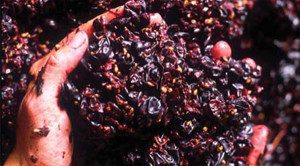 Napa Valley produces over 11.3 gallons of wine waste per year without a proper place to dispose of it. Sanitation agencies have estimated that 43,000 gallons of grape skins, leftover wine lees and water wash, bypass local wastewater treatments and are transported to plants in the outskirts of California. One popular process, that is used by the majority of these vineyards, is the use of massive trucks and machinery that carry the wine waste from the Bay Area and the North and Central coats, to one single landfill plant in Oakland, CA.
Napa Valley produces over 11.3 gallons of wine waste per year without a proper place to dispose of it. Sanitation agencies have estimated that 43,000 gallons of grape skins, leftover wine lees and water wash, bypass local wastewater treatments and are transported to plants in the outskirts of California. One popular process, that is used by the majority of these vineyards, is the use of massive trucks and machinery that carry the wine waste from the Bay Area and the North and Central coats, to one single landfill plant in Oakland, CA.
Although this solution is not exactly ideal for either the vineyards, or the local sanitation departments, at the moment it is the cheapest answer at this ongoing issue. One of the main concerns for these smaller wineries is to maintain a low cost production, which is why outsourcing trucking services to discard the waste is the best environmental and economical solution along the Golden Coast.
Sanitation officials say that the waste produced during the wine making process is a category within its own, and it does not fall under regular waste processes. Counties and producers have yet to come together to find a sustainable resolution that can be beneficial. The lack of these systems in place is one of the main reasons on why transportation prices continue to increase.
In the late 1990s the Napa vineyards began to rapidly increase production as they became established and more recognized around the United States. Their contribution to the wine market became significant, as a a result so did their contribution to the waste sector. The rapid changes in the past few decades have made it difficult for the East Bay Municipal Utility District to not only support these needs, but also plan for the future. Issues such as lack of monetary contributions from the wineries themselves makes it tough to build facilities that reflect and support these needs.
At this time, district officials are now turning to local wineries in order to raise resources for new waste facilities. A long term commitment is needed in order to elevate the strain these manufacturers are placing on local waste treatments and environments, especially the Oakland plant. The use of heavy vehicle machines needed to transport the waste is another point of concern for public officials. Early 2015 will be a starting point for all these different organizations to come together and initiate a plan that is beneficial to all parties involved.
